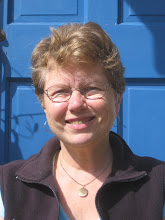When an Elderly Person Has Hallucinations - The Magic Ceiling
“See them?” she asks, pointing a shaky finger at the right-hand corner of her room. “I know I shouldn’t point, but I want you to know where they are.”
“Who?”
“The two gentlemen I was talking to.”
“I’m afraid I can’t see them.”
“I didn’t know you were partly blind!” Bea exclaims, so certain is she of their existence. Her visitors always seem to appear at the same location
I improvise: “It’s a magic ceiling. Only you can see through.”
We peer up at the exposed rafters together. Bea’s face lights up with pure wonder. “Why, that’s a perfect description.” Then rationality, the ruler she has used all her life, creates doubt. “Is that true? Is that known?” There is urgency in her voice now.
I wonder what I have gotten myself into. It is one thing to play Alice in Wonderland with a child. I realize I am out of my depth with a bedridden elderly person. Should I tell her she is crazy? Is she? Are her visitors simply hallucinations? Who is to say so with certitude?
From the Internet I learn of Charles Bonnet syndrome. Elderly people with some visual impairment can have “complex visual hallucination.” It is not necessarily a sign of dementia. Often the elderly do not report their visions for fear of being labeled as mentally unwell. Charles Bonnet identified the condition in 1760.
Sven reminds me of the altered state people enter when close to sleep. Visions, insight, can occur. I think of extrasensory perception.
Small children often have imaginary friends. Mine had a name and I certainly sensed its presence. Are Bea’s visitors the same phenomenon? Does extreme old age open doors that we shut when society teaches us what we are sensing does not exist? We must lose the ability to tune in to the same frequency. Bea’s experience seems to indicate it is not lost forever.
Charles Bonnet syndrome. Okay.
Bonnet's patient came to regard his visions as something “he had to put up with.” Bea finds her visions entertaining. I am not surprised that she interacts with them. The thing is, they often interact with her, too. Perhaps science cannot fully explain what Bea is experiencing when she peers through her “magic ceiling” …



1 Comments:
I have experienced this phenomenon of which you speak - with my father and grandmother in their last days, and with my two small children. I have wondered the same thing - whether they are more finely attuned and less involved with what society says is visible and possible or not. Or whether they have the same imaginary friend. Who arrives at various times. And accompanies us to the market. It's vaguely spooky. I'm trying to be friendly.
At least the friend thinks I'm nice. That's something.
Post a Comment
<< Home